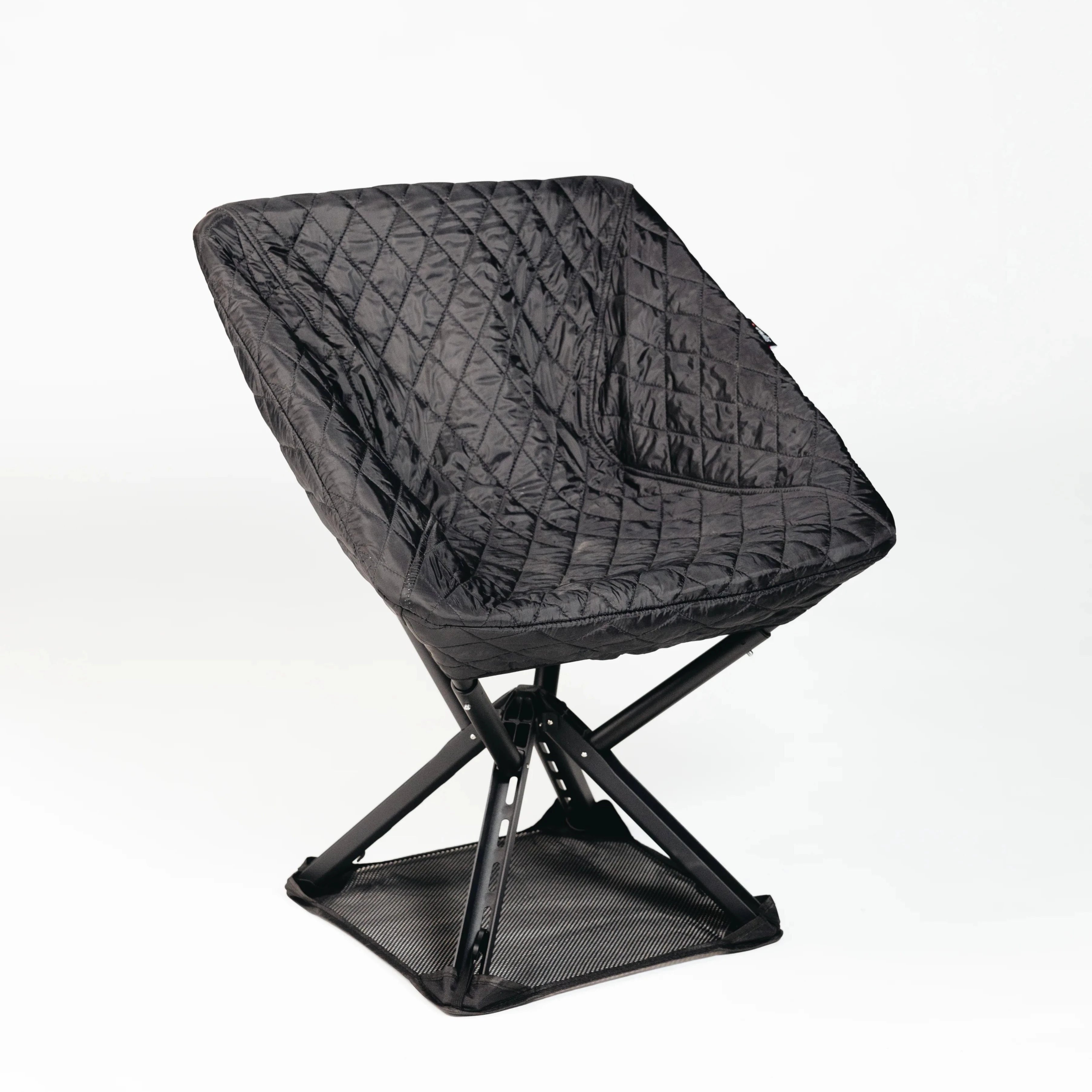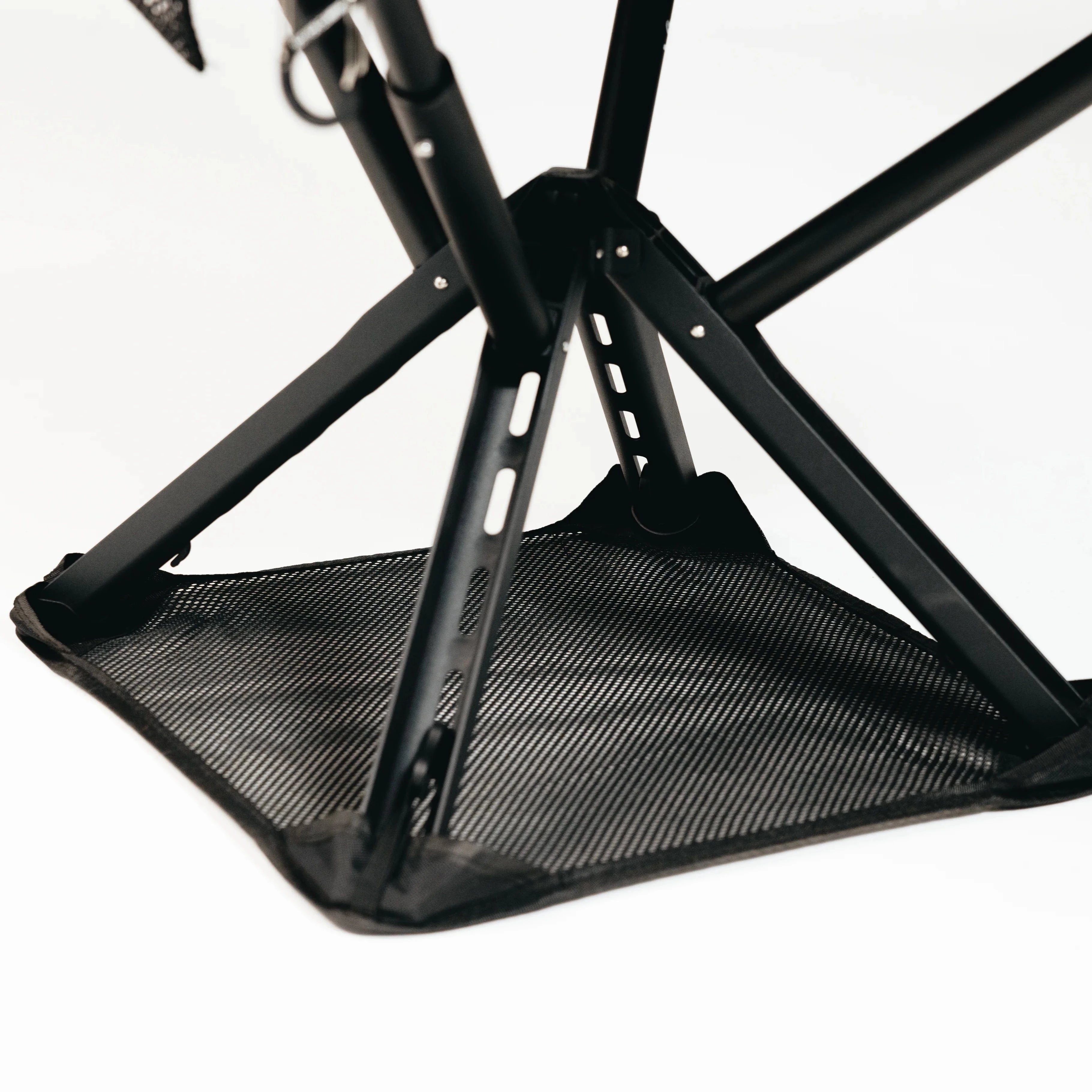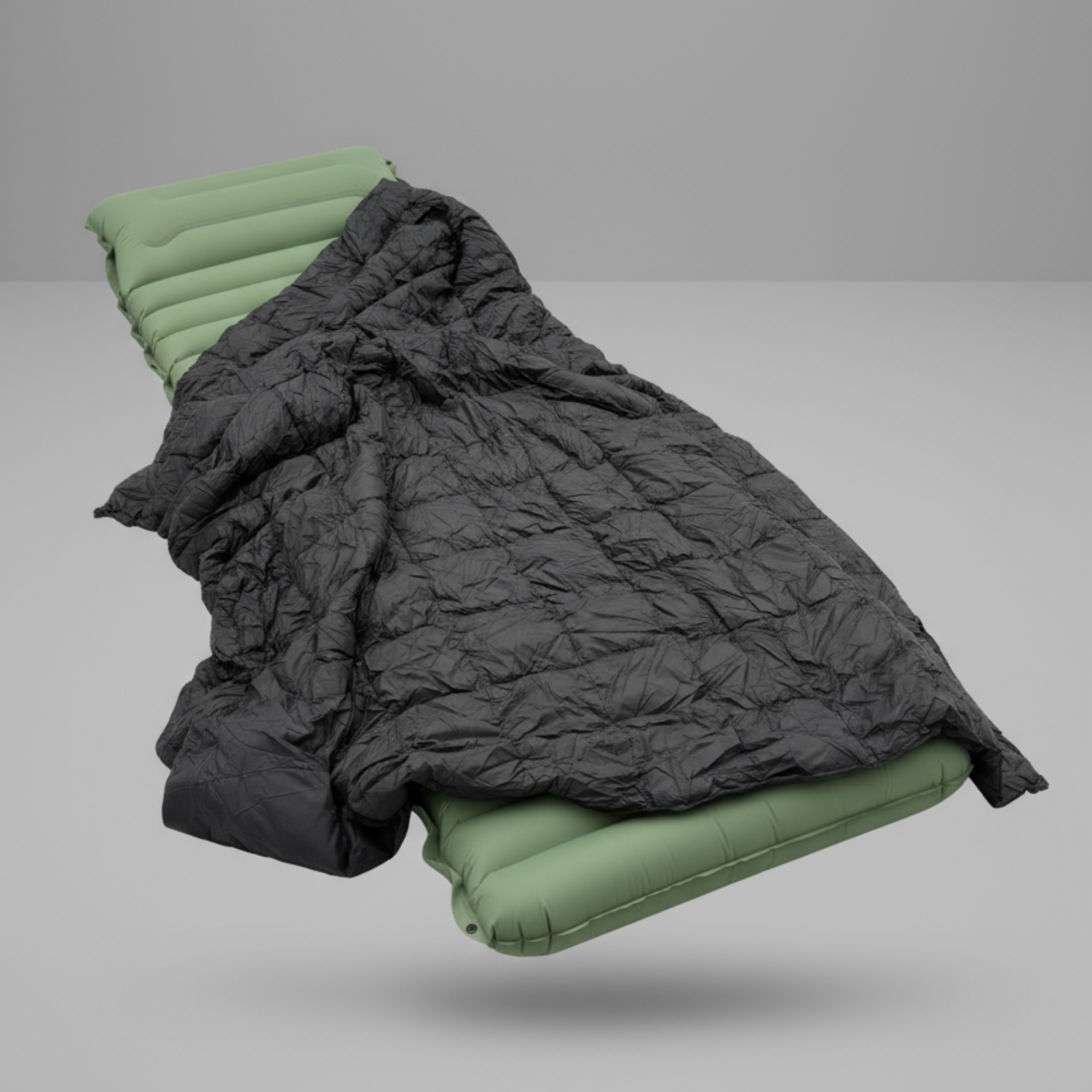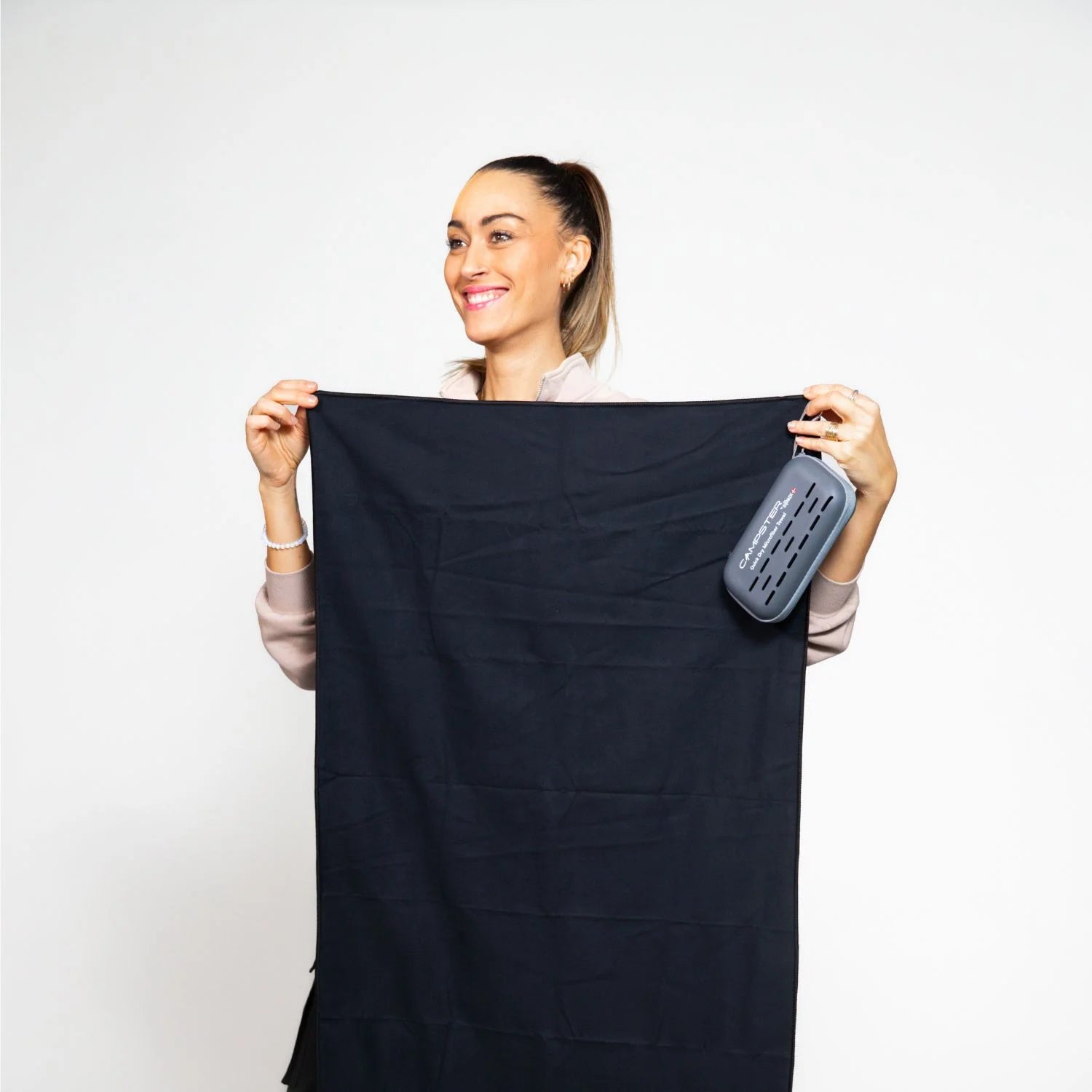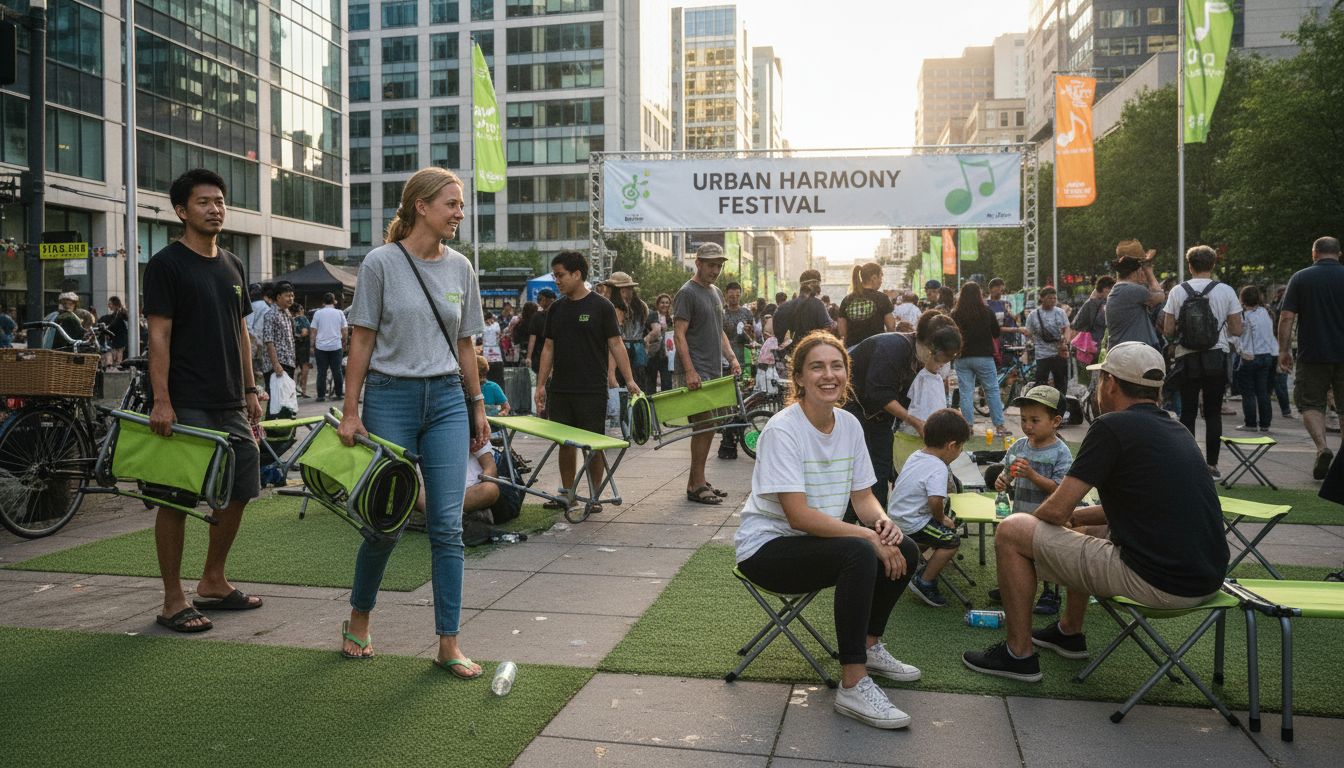Over 50 million portable chairs are sold each year, proving how much people value comfort that can travel with them. Whether it’s a crowded outdoor concert or a last-minute seating need at a family gathering, flexible seating options make life easier and more convenient for everyone. This guide sheds light on what truly sets portable seating apart, breaking down the designs, uses, and features that matter most when choosing the perfect chair to fit your lifestyle.
Table of Contents
- Defining Portable Seating And Its Core Uses
- Types Of Portable Seating Solutions Explained
- Key Features: Design, Comfort, And Materials
- Practical Applications For Outdoor And Urban Use
- Comparing Portable Seating To Fixed Alternatives
Key Takeaways
| Point | Details |
|---|---|
| Versatile Applications | Portable seating is ideal for various scenarios, including outdoor events, camping, and emergency shelters. Its adaptability makes it essential for flexible seating arrangements. |
| Innovative Design Features | Modern portable chairs prioritize lightweight construction, compactness, and ergonomic comfort. These features enhance mobility and usability across diverse environments. |
| Dynamic Comparison to Fixed Solutions | Portable seating offers greater mobility and versatility compared to fixed seating, enabling quick reconfiguration and minimal installation requirements. This approach prioritizes user needs and adaptability. |
| Enhanced User Experience | Emphasizing comfort and flexibility, portable seating evolves beyond traditional designs, catering to active sitting and physiological well-being in various settings. |
Defining Portable Seating And Its Core Uses
Portable seating represents an innovative solution for flexible and mobile comfort across numerous environments. These lightweight chairs provide adaptable sitting options that can be easily transported, stored, and deployed wherever needed. According to Wikipedia, a folding chair is specifically designed to fold flat or compress into a smaller size, facilitating convenient storage and transport.
The core uses of portable seating span multiple contexts and scenarios. These versatile solutions are particularly valuable in situations where permanent seating infrastructure is impractical or unavailable. Some primary applications include:
- Outdoor events and festivals
- Camping and wilderness adventures
- Sports venues and spectator areas
- Emergency and temporary shelter environments
- Urban spaces requiring flexible seating arrangements
As highlighted by Wikipedia, portable seating technologies like mobile bleachers demonstrate how these solutions can adapt to changing spatial requirements. They enable dynamic reconfiguration of seating arrangements, allowing venues to quickly transform their layout to accommodate different needs. Whether you’re attending a music festival, participating in a wilderness expedition, or requiring temporary seating for a community gathering, portable chairs offer unprecedented flexibility and convenience.
The primary advantages of portable seating include lightweight construction, compact design, and rapid deployment. Modern portable chairs are engineered with advanced materials that balance durability, comfort, and minimal weight, making them essential accessories for adventurers, travelers, and urban dwellers seeking practical mobility solutions. By providing instant, comfortable seating anywhere, these innovative products have revolutionized how we approach temporary and spontaneous sitting needs.
Types Of Portable Seating Solutions Explained
Portable seating encompasses a diverse range of innovative designs tailored to meet different mobility and comfort needs. From minimalist folding chairs to advanced modular solutions, these seating options provide flexible alternatives for various environments and activities. Understanding the spectrum of portable seating helps users select the most appropriate solution for their specific requirements.
Several primary categories of portable seating solutions exist, each with unique characteristics:
- Folding Chairs: Traditional lightweight chairs that collapse for easy transport
- Inflatable Seating: Air-filled options that compress into compact packages
- Compact Stools: Minimalist designs perfect for quick, space-efficient sitting
- Convertible Seating: Multi-functional options that transform between different configurations
Interestingly, Wikipedia highlights an innovative approach called softseating, which involves furnishings made from textile materials with a honeycomb geometry. These unique designs can be compressed and then expanded to create seats, offering unprecedented flexibility for dynamic environments. Such advanced portable seating technologies demonstrate the ongoing evolution of mobility-focused design.
Another notable portable seating variant comes from outdoor-focused solutions. As noted by Wikipedia, picnic tables represent a classic example of portable seating that integrates both sitting and dining functionality. These structures, traditionally constructed from wood but now available in materials like recycled plastic and concrete, provide durable seating options that can be easily relocated. Whether you’re planning a wilderness adventure, attending an outdoor event, or seeking flexible urban seating, the wide array of portable seating solutions ensures there’s an option perfectly suited to your needs.
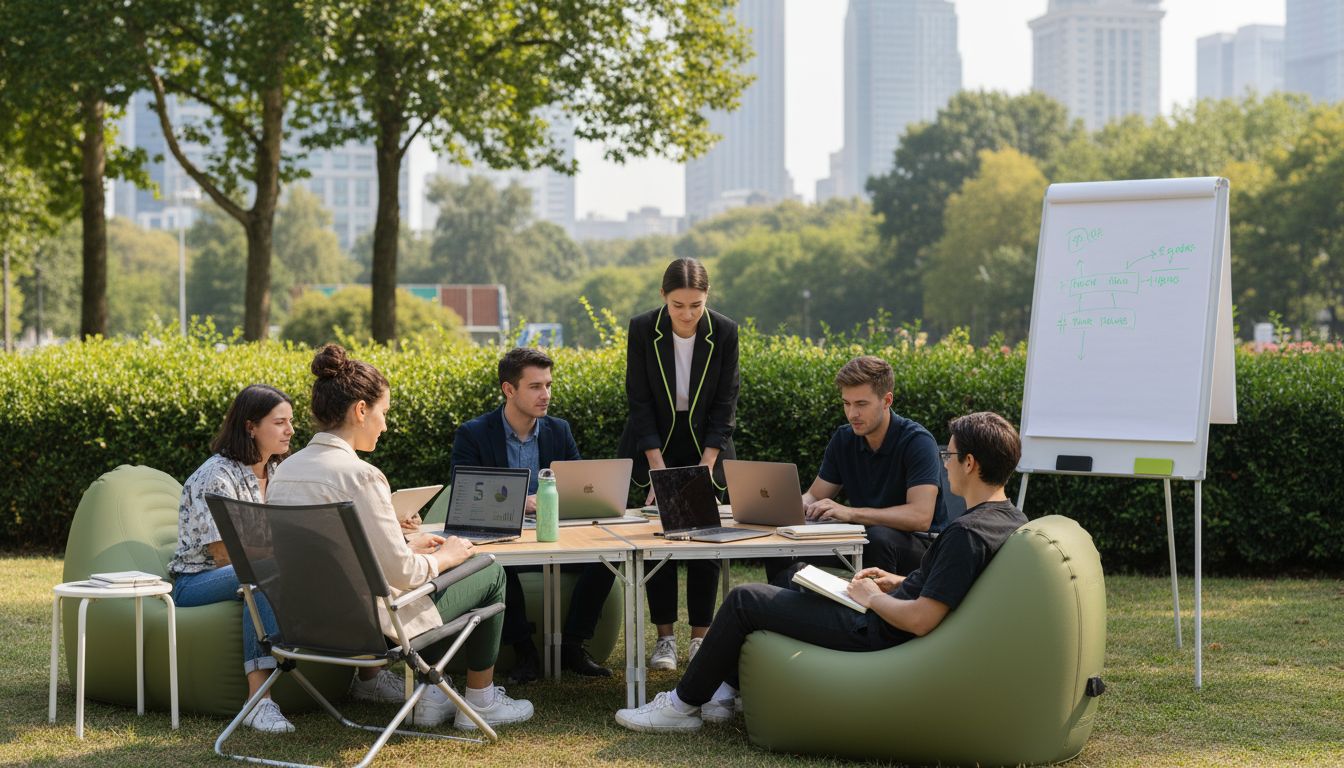
Key Features: Design, Comfort, And Materials
Portable seating design is a complex intersection of engineering, ergonomics, and user experience. Modern portable chairs must balance multiple critical factors to deliver optimal performance, including weight, durability, comfort, and adaptability. The most successful designs seamlessly integrate lightweight materials with intelligent structural engineering to create seating solutions that are both practical and comfortable.
The core design considerations for portable seating typically include:
- Weight Distribution: Ensuring balanced support across different body types
- Material Flexibility: Using lightweight yet strong compounds
- Compact Folding Mechanisms: Enabling easy storage and transport
- Ergonomic Contouring: Supporting natural body alignment
- Weather Resistance: Protecting against environmental challenges
Research from arXiv emphasizes the critical importance of anthropometric considerations in furniture design. By matching seating dimensions to users’ specific body measurements, manufacturers can significantly improve comfort and reduce potential musculoskeletal strain. This precision approach transforms portable seating from mere functional objects into personalized mobility solutions.
Interestingly, Wikipedia introduces the concept of active sitting, which reimagines traditional seating design. This innovative approach encourages movement while seated, using specialized chairs or stability mechanisms that promote flexibility and reduce sedentary behavior. Such design philosophies demonstrate how portable seating is evolving from static objects to dynamic, health-conscious solutions that adapt to human physiological needs. The best portable seating isn’t just about providing a place to sit—it’s about creating an adaptive, comfortable experience that supports users’ physical well-being across diverse environments.
Practical Applications For Outdoor And Urban Use
Portable seating has revolutionized how we interact with outdoor and urban spaces, providing flexible solutions that adapt to our dynamic lifestyle needs. From spontaneous park gatherings to professional outdoor work environments, these innovative seating options offer unprecedented mobility and convenience. The ability to instantly create comfortable sitting areas transforms urban landscapes and outdoor experiences.
Typical practical applications for portable seating span multiple domains:
- Recreational Spaces: Parks, beaches, camping sites
- Educational Environments: Outdoor classrooms, campus learning areas
- Community Events: Festivals, concerts, public gatherings
- Professional Settings: Remote work locations, outdoor meetings
- Emergency Preparedness: Temporary shelter and relief scenarios
Interestingly, Green School Yards highlights the critical role of portable seating during challenging times, particularly during the COVID-19 pandemic. Their National Outdoor Learning Initiative demonstrated how flexible seating solutions could transform learning environments, enabling educators to move instruction outdoors using low-cost, adaptable seating options like portable chairs, picnic blankets, and specialized learning mats.
As Wikipedia notes, traditional outdoor seating like picnic tables have long exemplified the versatility of portable solutions. These structures are commonly found in public parks, residential spaces, and community areas, showcasing how adaptable seating can create instant gathering points. Modern portable seating takes this concept further, offering lightweight, compact designs that can be effortlessly transported between locations, making them essential accessories for urban dwellers, outdoor enthusiasts, and professionals seeking flexibility in their physical environments.
Comparing Portable Seating To Fixed Alternatives
Portable seating represents a paradigm shift in how we conceptualize sitting spaces, offering dramatically different advantages compared to traditional fixed alternatives. While fixed seating provides stability and permanence, portable solutions deliver unprecedented flexibility, mobility, and adaptability across diverse environments. The fundamental difference lies not just in physical design, but in the entire approach to creating functional sitting spaces.
Key comparative aspects between portable and fixed seating include:
- Mobility: Portable chairs can be instantly relocated
- Cost: Generally more economical than permanent installations
- Storage: Easily compacted and stored when not in use
- Customization: Quick reconfiguration of space
- Installation: Minimal setup requirements
- Versatility: Adaptable to multiple environments
Sheridan Seating highlights the critical distinction between fixed and mobile solutions, noting that while custom-built installations serve specific venue requirements, portable alternatives offer unparalleled flexibility. This adaptability becomes particularly valuable in dynamic settings where seating needs can change rapidly.
According to Wikipedia, mobile seating options provide a low-cost alternative to fixed installations, requiring minimal site preparation. Unlike permanent structures, portable seating can be quickly deployed, relocated, and reconfigured to meet evolving spatial requirements. This approach represents more than just a seating solution—it’s a strategic approach to space management that prioritizes user needs, environmental adaptability, and economic efficiency.
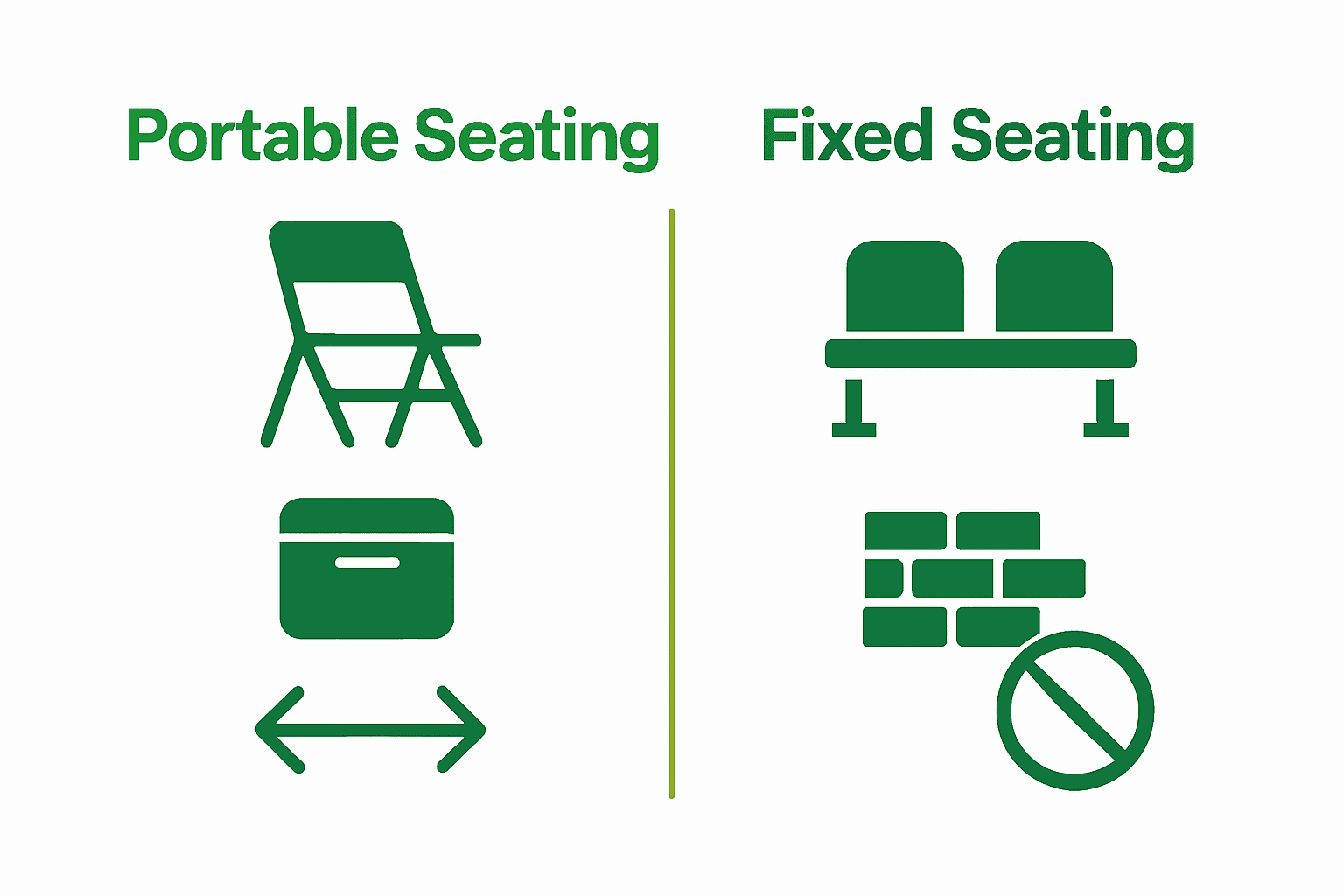
Experience the Freedom of True Portable Seating Today
The article highlights how portable seating solves the challenge of needing lightweight, durable, and easily transportable solutions for a variety of outdoor and urban environments. If you want seating that adapts to your active lifestyle and offers uncompromised comfort without the hassle of bulky chairs or fixed setups, it is time to explore innovative designs that match your mobility needs. Whether you are camping, attending an event, or simply enjoying city life, having seating that folds, compresses, and travels with you changes how you experience comfort on the go.
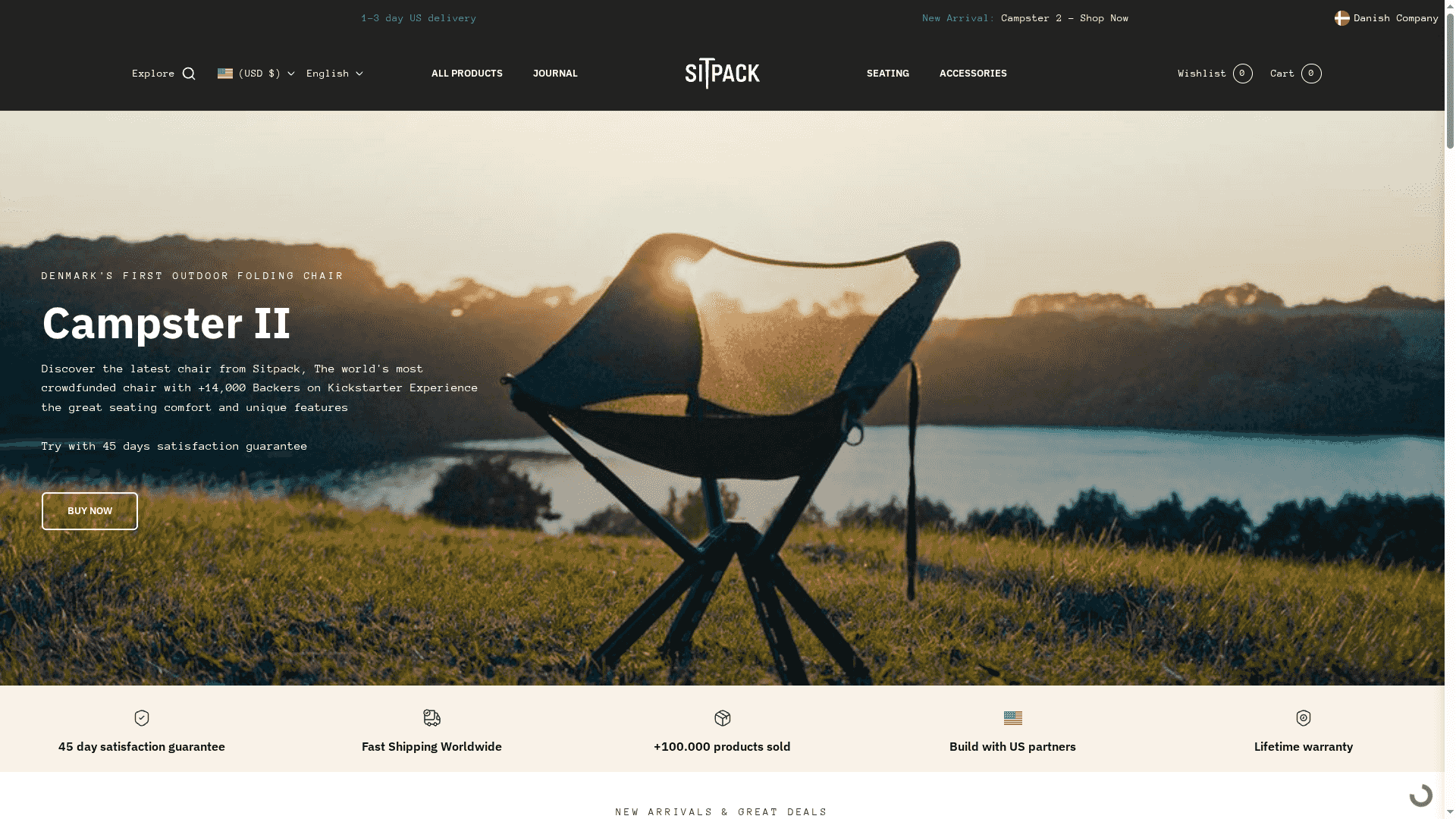
Discover how products like the Campster II and Sitpack Zen embody this perfect balance of compact design, durability, and ergonomic support at Sitpack. With eco-friendly materials, lifetime warranties, and fast global shipping, you can trust these portable chairs to be reliable companions wherever your day takes you. Don’t wait to revolutionize your seating experience. Visit Sitpack now and choose your next foldable, lightweight chair designed specifically for the challenges detailed in the expert overview of portable seating.
Frequently Asked Questions
What is portable seating?
Portable seating refers to lightweight and mobile chairs that can be easily transported and stored. These seating solutions are designed to provide comfort and flexibility in various environments where traditional fixed seating may not be available.
What are the core uses of portable seating?
Portable seating is commonly used in outdoor events, camping, sports venues, temporary shelters, and urban spaces that require flexible seating arrangements. Its adaptability makes it ideal for spontaneous gatherings and varying spatial needs.
What types of portable seating solutions are available?
There are several types of portable seating solutions, including folding chairs, inflatable seating, compact stools, and convertible seating. Each type offers unique characteristics tailored to different mobility and comfort needs.
What are the main advantages of using portable seating over fixed seating?
The main advantages of portable seating include mobility, ease of storage, lower costs, quick reconfiguration of space, and minimal installation requirements. These features make portable seating a versatile and convenient option for various settings.
